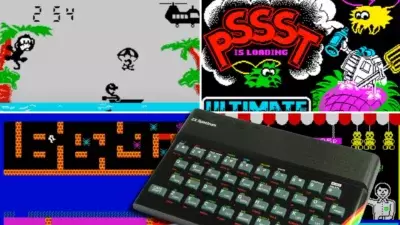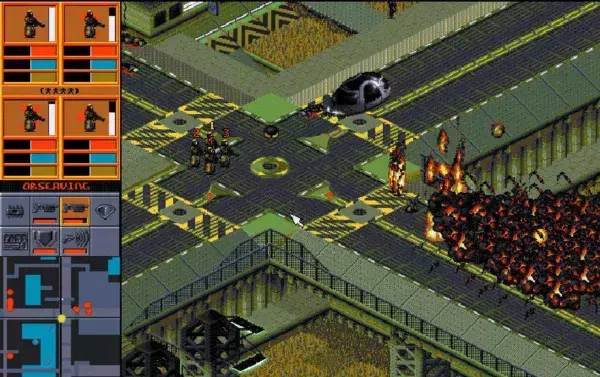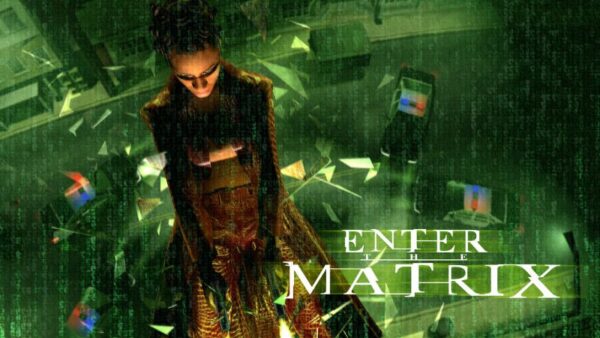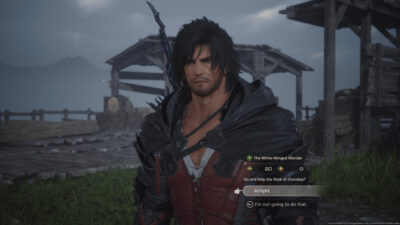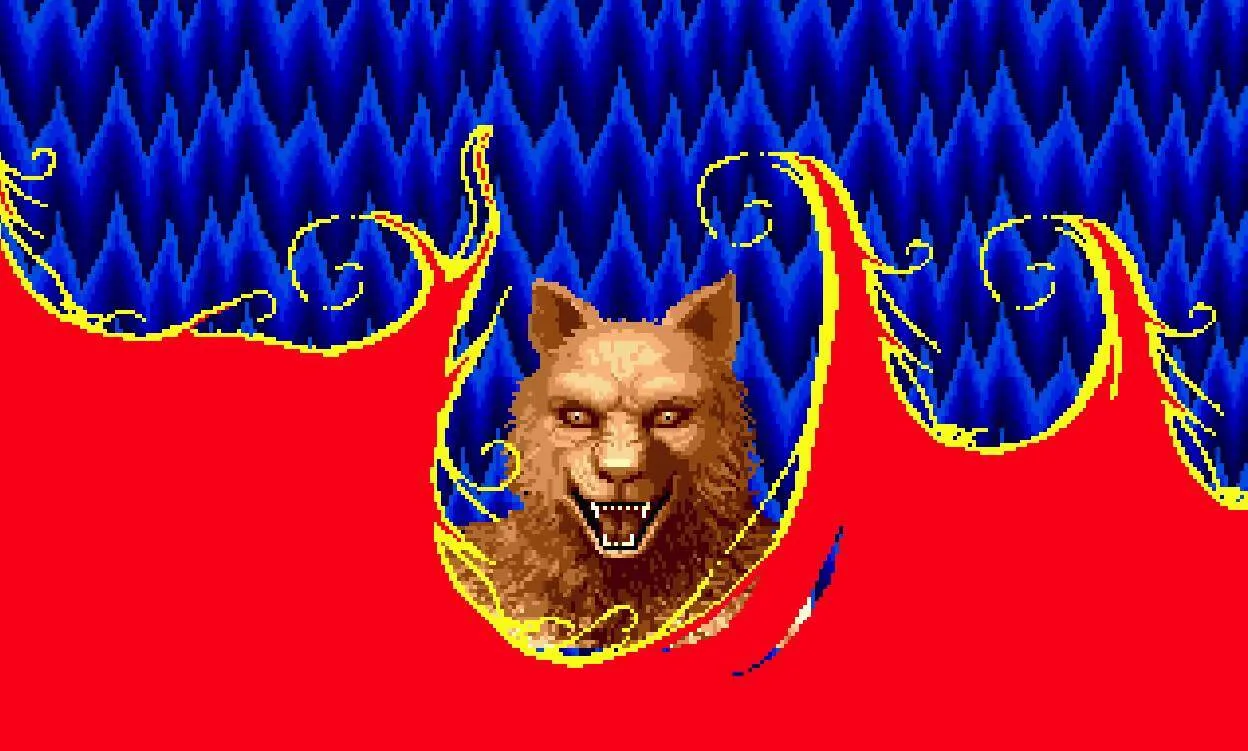
Sega’s beat-’em-up Altered Beast is 35 years old today. It remains a cult favourite – even if its designer didn’t particularly like it…
If you wanted your game to survive in the busy, noisy world of 1980s arcades, you needed a hook. Sega knew this better than just about anyone: throughout the decade, its super-scaler coin-ops, which included Space Harrier, OutRun and Afterburner, enticed players the world over with their imposing cabinets and striking pseudo-3D graphics.
Altered Beast, meanwhile, was somewhat different from the rest of Sega’s output at the time. A side-scrolling beat-’em-up with a mythological horror theme, it saw the player march from left to right, punching and kicking armies of ghouls and monsters. In the first stage alone, clobbering a zombie would cause its body parts to fly out of the screen. In terms of content, it wasn’t as gory and horrific as Namco’s Splatterhouse, which would arrive later in 1988, but it was quite a contrast from the sunny blue skies and jazzy euphoria of, say, Sega’s Fantasy Zone and OutRun.
Like Sega’s most popular games of the period, though, Altered Beast had a hook. As the player progressed, their character – a once-dead warrior revived by Zeus – absorbed the spirits of certain enemies. In the process, the warrior’s body would become increasingly muscle-bound; collecting enough spirit orbs would trigger a final transformation, with the hero turning into one of several beasts, depending on the level, including a wolf, bear and a flying dragon.
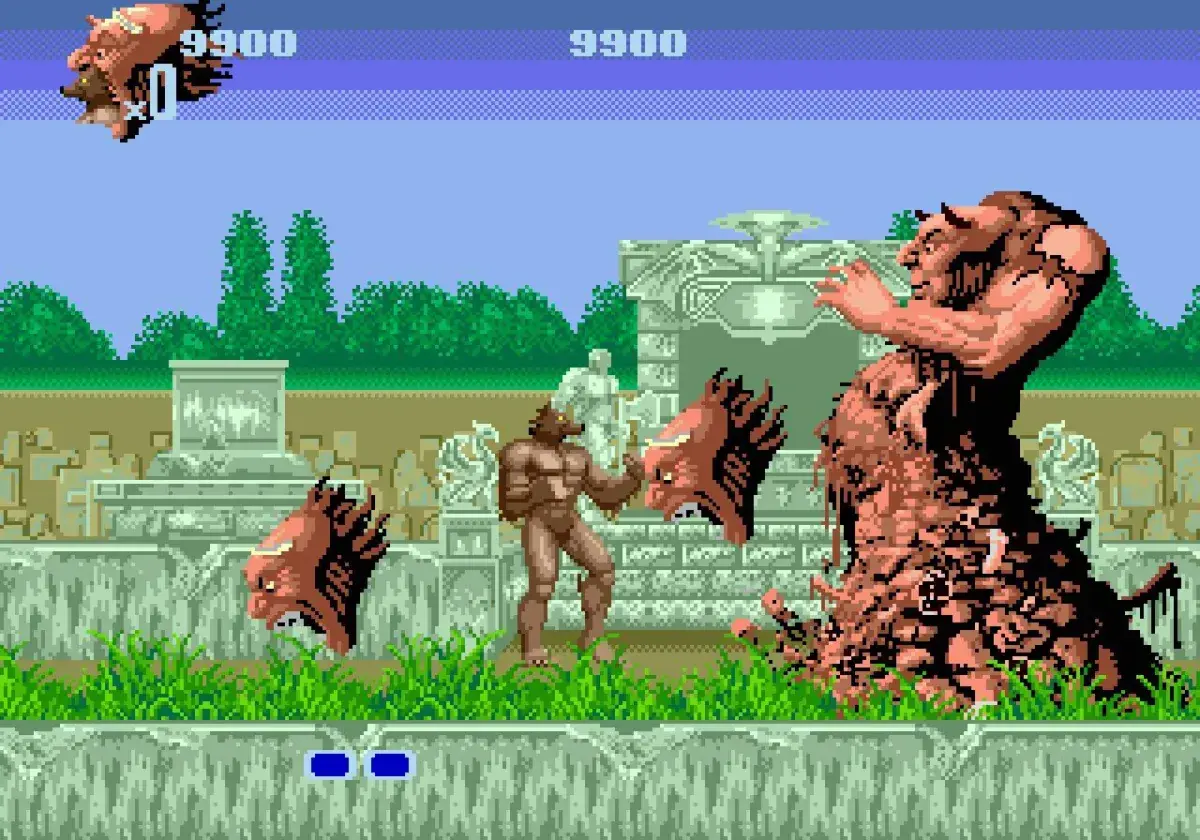
Credit: Sega.
The problem, though, was – and we should probably whisper this bit – Altered Beast wasn’t exactly brilliant. Strip away the huge sprites and oft-quoted digitised speech (“Rise from your grave!”), and you were left with a repetitive brawler whose difficulty actively encouraged credit feeding. Even its lead designer, Makoto Uchida, was candid about Altered Beast’s flaws in an interview for the wonderful book Sega Mega Drive/Genesis: The Complete Works.
“Altered Beast was a success visually,” Uchida said, “but the actual quality of the game itself was low and there were so many elements that needed to be looked at.”
Development on Altered Beast was, as Uchida describes it, somewhat difficult. Although the Greek mythology theme was hit on early – born in part from childhood memories of watching Ray Harryhausen films with his father – his original idea began and ended with the central character gaining muscle mass as he trudged through each level. When he had to wait before he could get a development team together, Uchida spent the downtime thinking about the concept and expanding on it. He eventually hit on the idea of the hero turning into various supernatural creatures.
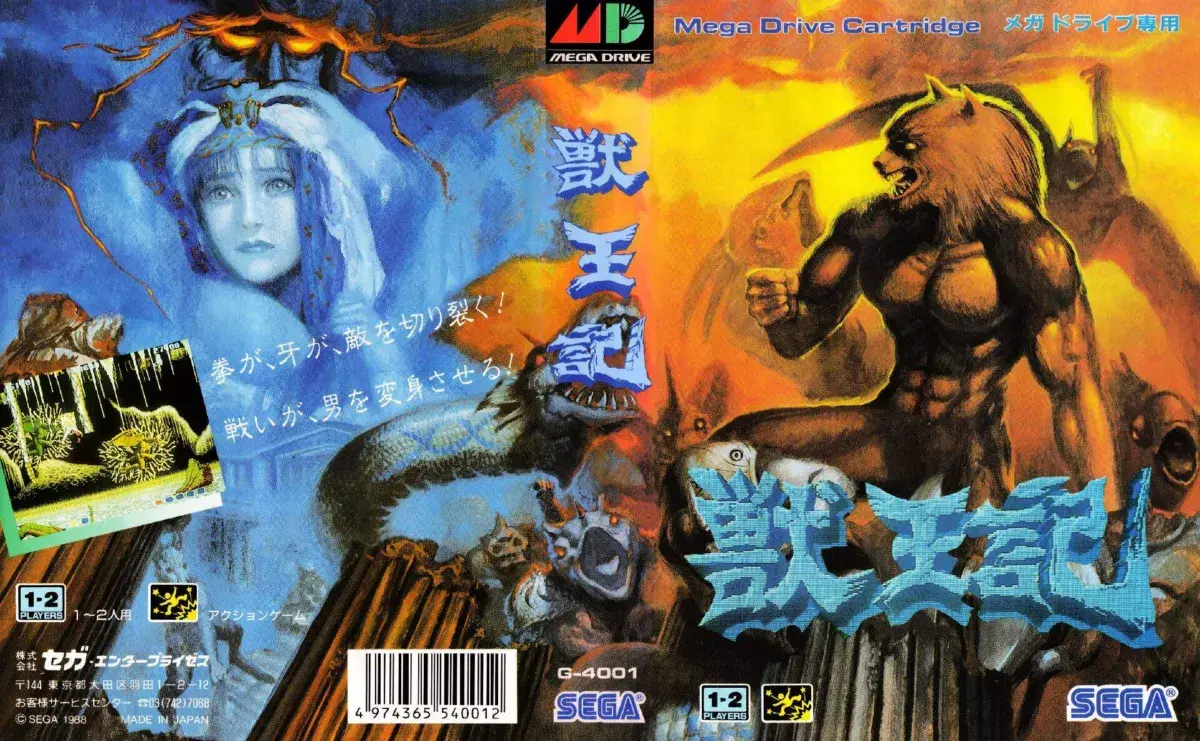
The Japanese Mega Drive had wrap-around artwork that didn’t make it to the western release. Credit: Sega.
Not all of Uchida’s ideas quite panned out, however, and he recalls that the combat mechanics were simplified considerably as Altered Beast neared the end of its development.
“With Altered Beast we were planning to include a mechanic that would allow the player character to sense strengths and weaknesses in enemies,” he said. “However, the development of this idea didn’t go very well. The decision to remove it was made at the very last minute before release… this change meant that I needed to cut the number of operable action moves by half and strip out half of the action. The designer was most upset by this because so many drawings had to go, but I was rather happy as the gameplay had become much simpler and more fun.”
(Uchida also recalls an unfortunate incident where, having struggled to come up with a satisfying look for the central character, he turned to a more junior designer to submit some different visuals, which Uchida preferred. Discovering this, the game’s lead designer promptly quit.)
Simple though Altered Beast was, its splashy violence and eye-catching monster designs saw it picked licenced by numerous other companies for home computer and console ports. And it’s here that Sega made a particularly canny business decision – one that turned what might have been a forgettable action game into one of its most iconic releases of the 1980s. It decided to make the game a pack-in title for the Sega Mega Drive in Europe and North America, where the console was renamed the Genesis. In the west, Altered Beast – with its big, colourful sprites and digitised speech – would be the game that showed off the system’s 16-bit technology.
The Mega Drive port was headed up by Rieko Kodama, an artist and designer better known for her work on Alex Kidd in Miracle World, Sonic the Hedgehog and the Phantasy Star series. In Patrick Hickey Jr’s book, The Minds Behind Sega Genesis Games, Kodama recalled that Altered Beast was planned as one of the Mega Drive’s launch titles in Japan, and with the system due to go on sale in October 1988 – mere months after the arcade machine launched in June that year – the conversion had to be completed to a tight deadline.
“I was in charge of all the background images, and I recall having to complete the porting process in a very short amount of time,” Kodama said, adding elsewhere that she and her team also faced the unenviable task of converting the game from the original System 16 arcade hardware to the Mega Drive’s more limited tech. “The Mega Drive had limitations on what could be displayed on a single screen in terms of characters, the number of enemies, size and more, we had to get creative. Our goal was to make the game feel as close to the original arcade version as possible.”
A number of omissions had to be made to squeeze Altered Beast onto the Mega Drive. Out went the pseudo-3D body parts, which sort of drifted off the bottom of the screen rather than hurtling out of it, as they did in the arcade version. Nevertheless, the Mega Drive port was vastly superior to any of the other versions available in the late 1980s; the ZX Spectrum, NES and Commodore 64 simply weren’t powerful enough to accurately replicate the original’s punchy graphics and sound.
In terms of creating a game that could show off the Mega Drive’s prowess, then, Altered Beast was a big success in the west, with the cartridge packed in with around 1.4 million consoles between the summer of 1989 and 1991, when it was replaced by Sonic the Hedgehog as Sega’s bundled game of choice.
Uchida was never entirely happy with his 1988 brawler – he later said that he made Golden Axe as a way of addressing the problems with Altered Beast. But for a generation of players, whose formative years were partly spent punching and kicking the heads off monsters on their Sega Mega Drive, Altered Beast's cult status remains assured.


